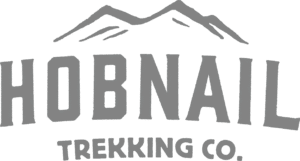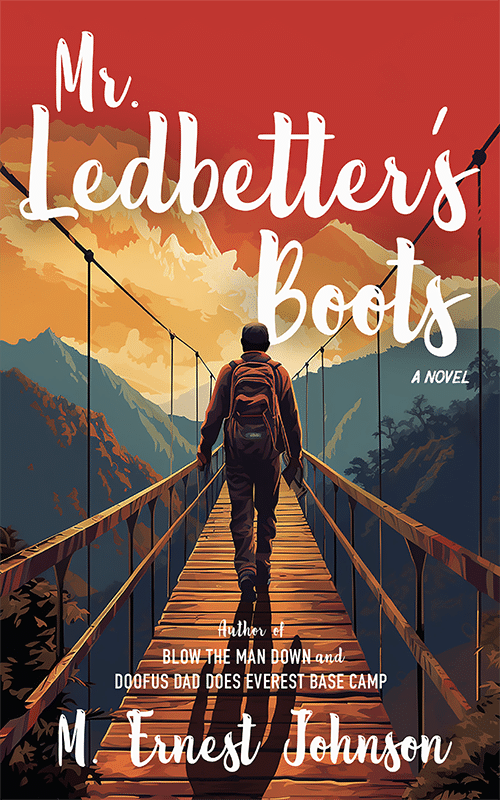I’ve written about hiking boots before, but decided to go a little more in-depth this time. After all, what’s more important to trekking than boots? Not much. The right hiking boots can literally make or break the experience that you’ve spent all that time training for. Uncomfortable or poorly chosen footwear can — and probably will — lead to blisters, fatigue, or even injuries, while the right pair will support your feet and keep you going mile after mile. (You have to be in good shape, too, but that’s a different topic.)
Here’s a comprehensive guide to help you choose the best hiking boots for your upcoming adventure.
1. Understand your trekking needs
The first step in selecting the right boots is understanding your trek. Consider the following factors:
- Terrain: Are you hiking on well-maintained trails, rocky paths, or uneven, rugged landscapes?
- Climate: Will you encounter wet, snowy, or dry conditions?
- Distance: How far will you be hiking each day? Longer hikes clearly require a more substantial boot.
Sometimes, you might just need to have access to a couple of different types of boots or hiking shoes. For example, if you’re planning a trek through muddy trails in a rainy climate, waterproof boots with good traction are essential, whereas a dry desert hike might prioritize lightweight, breathable materials to keep your feet cool. One size fits all isn’t really a thing with hiking boots.
2. Understand the different Types of hiking boots
There are several types of hiking boots, each designed for different needs. Choosing the right type largely depends on the specific trekking conditions you’ll face:
- Lightweight Hiking Shoes: Ideal for day hikes or short-distance treks on smooth trails. They offer flexibility but less support. (I absolutely LOVE my Altra hiking shoes and have worn them on long hikes in the Andes of Peru and Ecuador with no complaints.)
- Midweight Boots: Good for moderate terrains and multi-day treks. These provide a good balance of support, durability, and comfort.
- Heavy-Duty Backpacking Boots: Built for rough terrains and heavy loads, these boots are sturdy and offer maximum support. For example, if you’re going to be hiking over loose rocks for several days, you probably want this type of boot, especially for lateral stability.
3. Key features to look for
When shopping for hiking boots, keep an eye on these essential features:
- Fit and Comfort: Proper fit is non-negotiable. Ensure there’s enough room in the toe box, a snug heel, and no pinching or pressure points. Try boots on with hiking socks and insoles if you use them.
- Materials:
- Leather: Durable and water-resistant but heavier and less breathable.
- Synthetic: Lightweight and breathable but less durable.
- Gore-Tex or Waterproof Membranes: Essential for wet conditions, of course. Got to have this for wet hiking in cold weather.
- Ankle Support: High-cut boots provide more ankle support, ideal for rough terrains or carrying heavy backpacks.
- Outsole and Traction: Look for deep lugs and durable rubber soles to ensure grip on various surfaces.
- Weight: Lightweight boots reduce fatigue but may sacrifice durability and support.
4. Take the Break-in period seriously
Never wear brand-new boots on a long trek without breaking them in first. Aim to walk at least 10-15 miles in them during shorter hikes or wear them around the house for a week to soften the materials and identify potential problems. Once, we had a trekker who purchased cheapo boots and didn’t break them in at all before tackling the Everest Base Camp trek. Not a good plan. His poor feet gave up after only three days.
5. Test before you commit
When trying out and deciding on hiking boots:
- Walk on an incline to see how your toes and heels feel. Most reputable outdoor retailers will have some type of fake incline in the store for you to try out your boots.
- Mimic uneven terrain by stepping on rocks or uneven surfaces if available in the store.
- Test them at the end of the day when your feet are slightly swollen, mimicking trekking conditions.
- Don’t be afraid to take them back if you’re not totally happy with them. Again, a reputable store will allow you to return boots within a reasonable amount of time.
6. Don’t skimp on socks and insoles
Invest in high-quality, moisture-wicking hiking socks (ante up for Merino wool) and consider insoles for added comfort and support. Together, they can make a significant difference in your overall experience. Remember, too, that Merino wool socks will last multiple days without stinking and losing their softness.
7. Set a budget
While high-quality hiking boots can be pricey, they’re an investment in your comfort and safety. Expect to spend anywhere from $100 to $300 for a reliable pair. Higher-priced boots often feature advanced materials, enhanced waterproofing, and better support, making them more suitable for challenging terrains and longer treks. Keep in mind that durability often justifies a higher price.
8. consider these Popular brands
Some trusted brands in the hiking community include: When researching these brands, check online reviews, visit outdoor stores to try on different models, and consult experienced hikers to find the best fit for your needs.
- Salomon: Known for lightweight, high-performance boots.
- Merrell: Great for comfort and versatility.
- Lowa: Excellent for durability and rugged terrains.
- Asolo: High-end and super well-constructed. My heavy-duty boots are Asolo TPS 520s. I paid $300 for these, but after seven years, they’re still like new.
- Vasque: Offers a balance of comfort and durability.
- Oboz: High-quality footwear based in Bozeman, Montana. Holly loves her Oboz Bridger mid-weight boots.
You’ve heard this a million times, but the BEST thing to do when buying new boots is to go to a reputable outdoor retailer — where there are highly experienced employees who know their stuff — and let those folks guide you through the process. Good luck!





Recent Comments